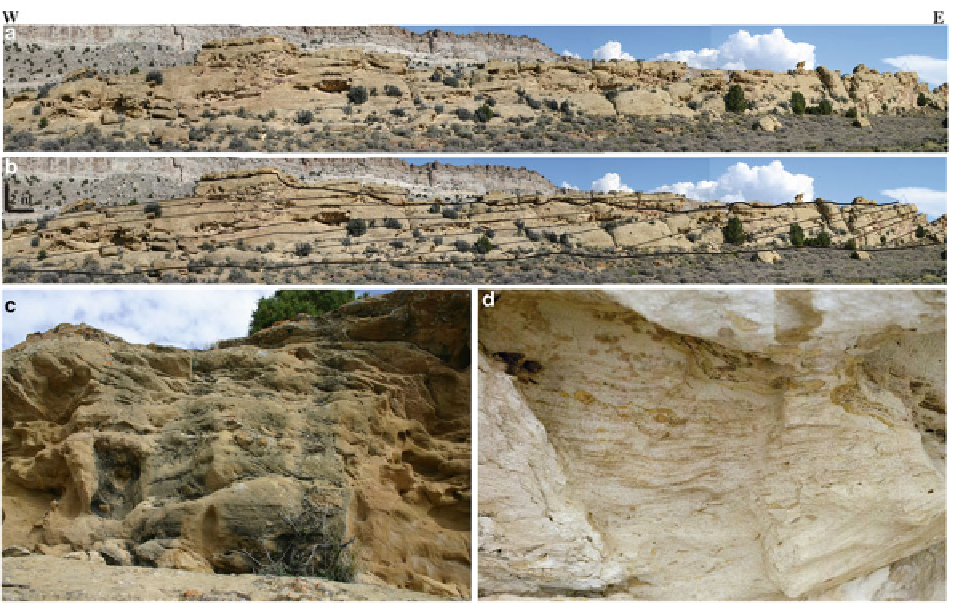Geology Reference
In-Depth Information
Fig. 17.15
An example of tidal bars in a middle-estuary zone of
a mixed-energy estuary. Note the large-scale accretion (
a
and
b
)
of the tidal bars. Close-ups (
c
and
d
) show typical cross-
stratifi ed sandstones with ubiquitous mud drapes within the
bars. Chimney Rock Sandstone (Modifi ed from Plink-Bjorklund
2008
)
17.3
Tidal Deposits of Setting 1:
Regressive Tide-Dominated,
Subaqueous Deltas Developed
Preferentially in the Basinward
Reaches of Campanian Clastic
Wedges
S. Wyoming within the transgressive or back-stepping
estuarine units that cap shallow-water, lowstand deltas
(Mellere and Steel
2000
). Compared to middle estuary
tidal bars, the sandstones here are slightly coarser
(medium- rather than fi ne-grained), the sets of cross
strata are generally larger (commonly >40 cm), chan-
nels are abundant and landward-directed paleocurrents
are prominent.
Another Campanian example is the upper portion
of the Chimney Rock Sandstone, where the outer-
estuarine tidal bars occur as erosionally based bodies,
4-7 m thick and 4-10 km long, comprising composi-
tionally and texturally well sorted sandstones
(Fig.
17.16
; Plink-Bjorklund
2008
) . These sandstones
occur as obliquely landward-accreting sets with bidi-
rectional cross strata and sigmoidal cross strata. In
contrast with inner-middle estuarine tidal deposits,
these outer-estuarine tidal bars are better sorted, con-
tain fewer mud drapes, are associated with upper-
fl ow-regime plane-parallel laminated sandstones, and
contain a few interbedded hummocky-cross stratifi ed
sandstones (Fig.
17.16
).
Some of the best known tide-infl uenced and tide-
dominated sandbodies in the WIS are restricted to the
most 'basinal' reaches of regressive clastic-wedges as
noted fi rst by Mellere and Steel (
1995b,
2000
) and by
Hampson (
2010
) (Figs.
17.17
and
17.18
). Because all
large-scale clastic wedges consist internally of a series
of thinner tongues, and the shoreline progradations of
these tongues extend progressively farther into the
basin through time, the tidal sandbodies being dis-
cussed here occur relatively far west in the Early-
Middle Campanian and up to hundreds of km farther
east (basinwards) in the Middle-Late Campanian
(Fig.
17.3
). Their key characteristic is that they tend to
occupy the most distal 10-50 km of the high-frequency
regressive tongues, the most basinward increment of

